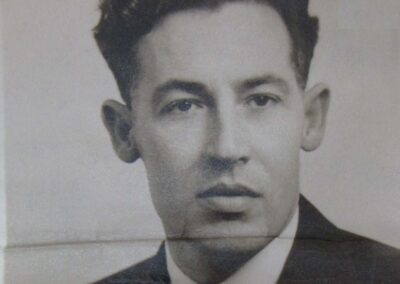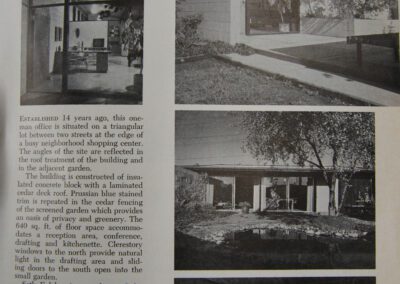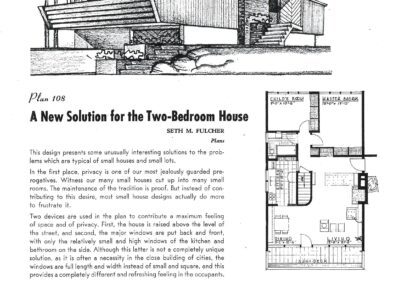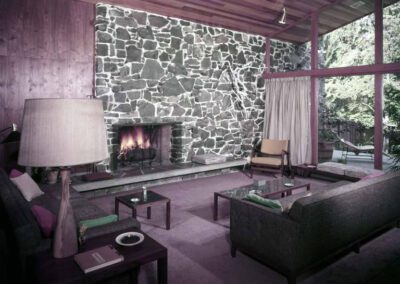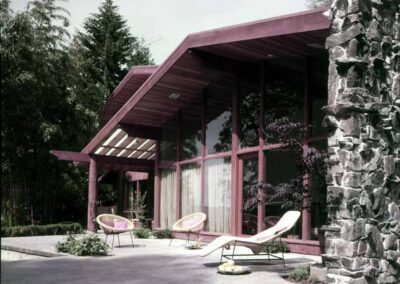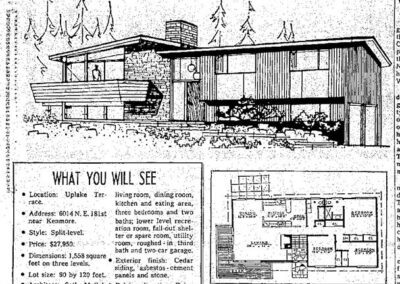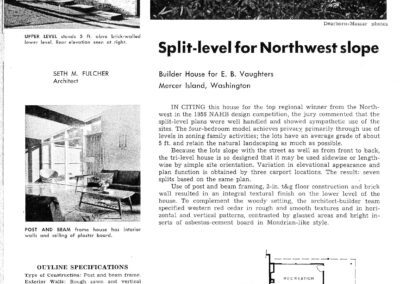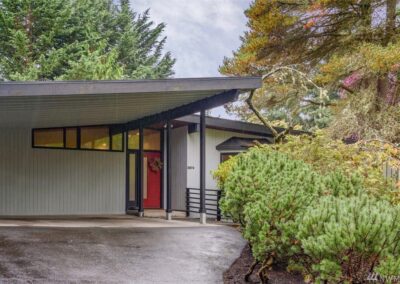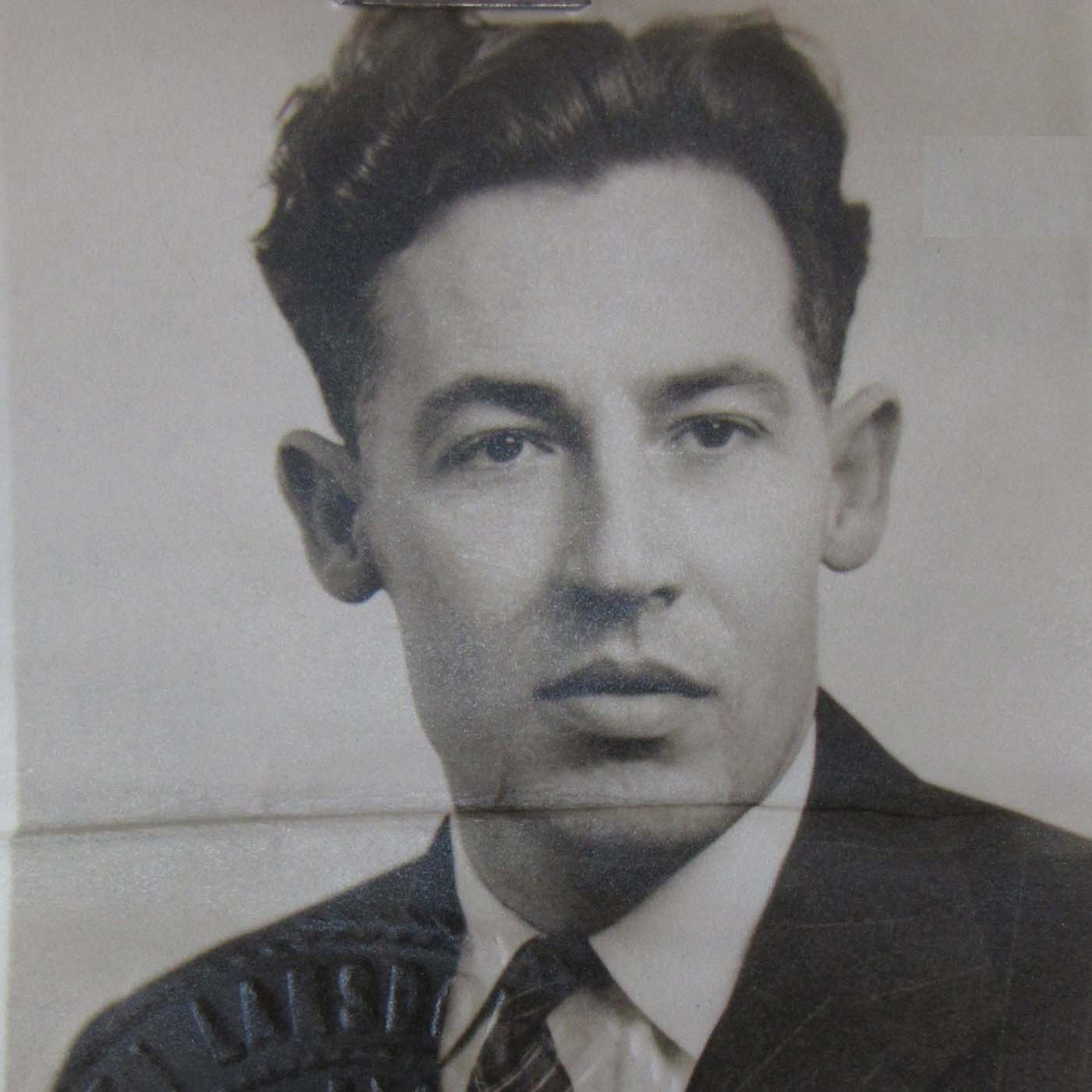
Fulcher, Seth M.
(1914 – 2004)
Seattle architect Seth McCallen Fulcher was born in Nashville, Tennessee on February 28, 1914 but grew up in Yakima, graduating from Yakima High School. He attended the University of Washington, graduating in 1942 and was awarded the distinguished Alpha Rho Chi Medal, which recognizes graduating architectural students for their leadership and service, and what they might offer to the future of the profession.
A gifted and confident student, Fulcher had entered several design contests while still in school and immediately thereafter. He received a third prize in the architectural problem contest at the University of Washington and also won third place in the AIA and Producers Council “House of Tomorrow” competition sponsored by Frederick & Nelson in 1943.
Fulcher married in 1944 and with WWII in full swing, he was drafted. He took a job with the Army Corps of Engineers (1944-46) and was stationed in San Diego, California. After the war he and his wife returned to Seattle. It is unknown where he worked in those early years, but documents show that he quickly became engaged in the local architectural community. Fulcher provided a modern, split-level designed home for the Dorothy Neighbors column (a precursor to the Home-of-the-Month) in the April 1947 issue of the Seattle Times and an angular, two-bedroom dwelling for the Pacific Northwest Book of Homes in 1947.
Fulcher’s interest in residential design followed him throughout his long career. He was a prolific designer of custom homes, most in the Contemporary style with broad post-and-beam supported roofs and large expanses of glass. Notable projects include the Frank Ferguson House on Queen Anne Hill (1949); a design for P. Bradley Edes on Hunts Point (1954, a Seattle AIA Honor Award winner), the S. A. McPherson House in Seattle (1955); his own family home (1955); a home for builder Thomas P. Rose (1955); the Gerald Cone House (1956); the D.M. McIntosh House (1956); the Roy Gottschamer House (1959); the Raymond Lachman House (1960) on Mercer Island; the Kloff House (1961); the Blake Potter House (1963) in Kenmore; the William S. Shearer House (1965) in Edmonds; the Robert Bocek House (1966) on Hunts Point; the Hammer House (1968); the Al Wolf House (1969) on Vashon Island; and the Gordon Richard House (1969) near Bothell. His various residential work received ten nominations for AIA / Seattle Times Home-of-the-Month program. Two of the designs won Home-of-the-Year (1958, 1960).
Fulcher had formed his own firm in 1954 and while custom homes became his specialty, it was his design for a spec house for builder E.B. Vaughters that brought him national attention. The modern split-level, three-bedroom, two-bath home was featured on the front cover of American Home magazine and was touted as the outstanding home in the U.S. in 1958 and the “Best Home for the Money in the State of Washington”. It won a national award from American Builder, Practical Builder, House & Home magazines, as well as a regional award for best home for children from Parents Magazine. The house, located on Wembley Lane on Mercer Island, was part of a small group of 10 homes centered around a common swimming area.
Such praise brought him many additional commissions from a variety of builders. Sample projects include spec homes for builder Clarence Herr in the Sea Lawn Acres neighborhood (1956); additional designs for E. B. Vaughters (1959); several spec homes for builder A & J Homes in Shoreline (1962); builder Matt Jones (1961); builder Bert Stole (1962) in Edmonds and Hemlock Acres (1964) in Lynnwood; and several designs for projects in Lake Forest Park for builders E.H. Landes (1966, 68), Leo Gerfeis (1966), and Donald Hosking (1967).
Fulcher also completed designs for other non-residential projects including the Haller Lake Methodist Youth Center (1955); Foodliner Supermarket in the Wedgewood District (1956); Mobile Shade Co. Office & Showroom (1958); the Ridge Roller Skating Rink (1959); Art’s Green Giant Nursery (1960); the Fishbowl Restaurant (1962); Shurtleff Clinic (1964); Grace Evangelical Lutheran Church Parsonage (1964) & Church (1965) on Phinney Ridge; the Fast Mail Office Building in Edmonds (1970); and the Trailer Equipment Distributors Inc. warehouse and showroom (1970).
With business booming, in 1960 he built a new office for himself next to the Plaza Shopping Center in the Greenwood neighborhood of northwest Seattle. The angles of the small triangular lot were reflected in the roofline, floor plan and small garden.
Fulcher also completed several apartment projects. Notable complexes include the Key Park Apartments (1958); and apartment for the Hava Corporation (1960); a Ten-Unit condo on Mercer Island (1962); an apartment for owner/builder Hans Jensen (1967) in Greenlake; and the Greenwood Garden Apartments (1969).
Active in a variety of community organizations over the course of his career Fulcher served as President of the North Seattle Exchange Club (1963); was Chairman of the Greater Greenwood Community Council (1969-70); and served on the AIA/Seattle Times Home-of-the-Month Committee (1962-63) and the AIA Public Speakers Committee (1968-70). In 1976 he unsuccessfully ran for State Representative of District 44. Fulcher also became an active preservationist later in life, and fought to landmark Ballard High School in 1995.
Fulcher died in Seattle on February 24, 2004.
– Michael C Houser
Living Room of P. Bradley Edes Residence | Hunts Point
Built 1954 | Source: University of Washington Special Collections
P. Bradley Edes Residence | Hunts Point
Built 1954 | Source: University of Washington Special Collections
